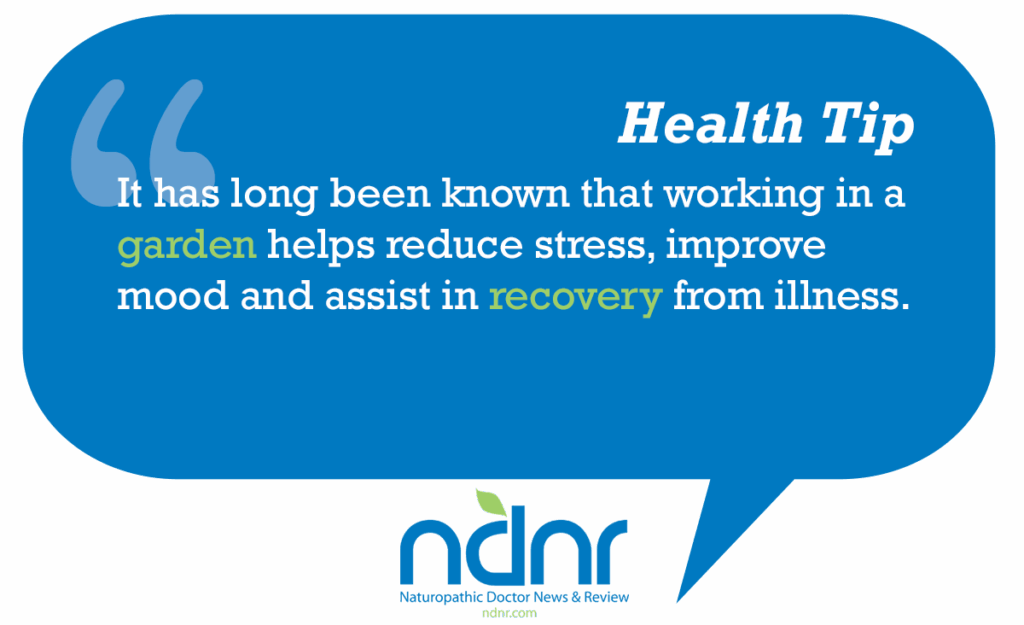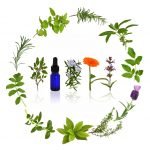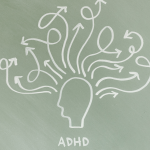Natural Medicine: The Healing Effects of Exposure to Nature
Kurt Beil, ND
The naturopathic profession holds the concept of Vis Medicatrix Naturae as one of its highest ideals. We define ourselves by an adherence to the philosophy that some power inherent within nature moderates the healing process, rather than by the use of specific modalities that control these processes. As healthcare practitioners, we resort to these modalities to assist our patients in their journey toward resolution of disease and the quest for achievement of optimum health. Yet, it is the underlying therapeutic capacity of nature that allows us to practice and our patients to heal. This entails allowing the healing powers of the immune system to function properly, though often with assistance from wholesome foods, botanical medicines, homeopathic preparations, nutritional supplements or application of curative waters. However, recent research is showing that simple sensory exposure to nature is therapeutic in its own right and contributes more to our health than we had previously thought possible. Though we practice a tradition of natural medicine, many NDs may be surprised by the health benefits to body and mind that exposure to nature may bring. This article will serve as a literature review of theories and research of this important, up-and-coming area of medicine.
Background
It is useful to realize that our world today is very different from the world of our naturopathic founders. Around 1900, when Father Kneipp was teaching Benedict Lust the ways of the (Vital) Force, most diseases were caused by microbial infections. The chronic diseases that plague our current medical system were present, but not nearly as prevalent. Illnesses pertaining to what we would now call “environmental medicine” also existed but were rare. The age of toxic chemicals and industrial pollutants that now poison our rivers and change our climate was just in its infant stage a century ago. Much of the environment was still pristine, and the majority of people lived within close proximity (U.S. Census Bureau, 1995). Even for people who lived in the growing urban centers of the time, access to the pollution-free countryside was easy and not far away. Almost everyone had a direct connection (if not identification) with the land, a term used decades later in Aldo Leopold’s A Sand County Almanac to describe the entire ecological community of flora and fauna (Leopold, 1949). At a time when the U.S. population was only 25% of its current size, few people consciously thought of the impacts that a modernizing urban environment would have on their health.
Yet some visionary pioneers foresaw the impacts that industrial urban development would have on society. People such as Frederick Law Olmsted, the founder of landscape architecture in the mid-to-late 19th century, understood that the rapid growth of cities and the loss of natural landscapes in the urban setting were more than just signs of the inevitable march toward progress. The loss of nature meant the loss of connection to a common heritage: an instilled sense of belonging and tradition upon which most pursuits of a healthy life were based until that point. Olmsted arranged for the preservation of New York’s Central Park, Boston’s Emerald Necklace (including Boston Common) and many other parks, university campuses and other green spaces scattered throughout the U.S. (Ramey, 1990). He did this specifically for the purpose of retaining space in which people could relax and reconnect with the natural world, despite the encroachment of urban development. In a similar manner, the naturopathic sanitaria of Benedict Lust, Adolf Just, John Kellogg and others were located in idyllic natural settings to provide the most relaxing pastoral environment possible for people to obtain their therapeutic regimes of diet, exercise and hydrotherapy (Kirchfield and Boyle, 2005).
Theory
Today, people find just as much relaxation in nature as they did a century ago. We are aware of the benefits of retreating to a favorite spot in the woods or mountains or on the coast. Our inclination to partake in the benefits of the freely available “Nature Cure” provided by our surroundings is one that is intrinsic to the human being. This affinity for nature is universal and timeless, extending back across multiple generations. In fact, it extends beyond the beginning of civilization to the origins of human history.
According to theories of evolutionary and environmental psychology, we humans are adapted to appreciate nature on both a psychological and physiological level (Stokols and Altman, 1987). Our prehistoric ancestors were immersed in the natural world for years. During this time, the functioning nervous system became adapted to sensations received from the surrounding environment. This system evolved in a way that incorporated the sights, sounds and smells of nature into a genetically coded intrinsic affinity. The natural environment became the “set-point” for the thermostat of sensory perception, and this has continued throughout the ages.
This affinity for the natural world has been described by the biologist Edward O. Wilson as “biophilia,” or “love of living things” (Wilson, 1984). Biophilia and similar concepts suggest that rather than simply getting a sense of enjoyment from exposure to natural surroundings, we have a biologically based need to be in contact with nature. The evolutionarily adapted and genetically determined set-point defines the healthy parameters within which we prefer to operate. Any operation outside these parameters contributes to a state of “dis-ease,” which may partially explain some of the high prevalence rates of chronic disease and mental illness in modern urban environments. As stated by naturopathic pioneer Adolf Just: “Men who no longer listen to the voice of nature become the victims of a thousand different diseases and miseries” (Just, 1903). Of course, no one believes that this displacement from the connection to nature is the only, or even one of the primary, causes of disease. In addition to the multiple other known causative factors of disease that would preclude such an assumption, human beings are an adaptable species and can tolerate long stretches of disturbance outside of a tolerable normal range. But as with other sources of chronic disease, the journey toward optimal health will never become complete unless all known obstacles are removed and all optimum strategies are utilized.
Stress Reduction and ANS Response
One of the most pervasive contributors to the multi-factorial cause of disease is stress. This topic is extensive and very well known to naturopathic and holistic practitioners. A brief summary of the stress reaction recalls the complex interplay of neuroendocrine responses of the hypothalamic-pituitary-adrenal (HPA) axis and Selye’s general adaptation syndrome (GAS). A biological system that experiences stress in the short term can compensate and maintain operation within a functional range of balanced homeostatic maintenance. However, long-term exposure to stressors leads to an imbalance in the homeostatic regulatory system, and over time results in decompensation and eventual deleterious consequences. The accumulated psychological and physiological stresses over time are known as “allostatic load,” and it is this total collection of stressors and associated responses that results in pathology and contributes to disease (McEwen, 2000). The complete set of psycho-physiologic stress responses is contained in the area of psychoneuroimmunology (PNI) research that lies at the heart of mind-body medicine.
It has been proposed that exposure to nature can play a significant role in the health of human beings because of this relationship of PNI and allostatic load (Parsons, 1991). Building on Wilson’s idea of biophilia, it is suggested that the ubiquity of the natural environment during humanity’s evolutionary development predisposes our hypothalamus to moderate the effect of the autonomic nervous system (ANS) when we are exposed to natural settings. Compared to the modern world’s environment of sensory overload (e.g., fast moving cars, flashing computer screens, ubiquitous and constant barrages of e-mail), the gentle ripples of grass in the wind or the smooth flow of water down a mountain stream are calming, non-threatening events. These benign stimuli from nature help the body move out of Selye’s stages of GAS and the sympathetic response of ‘fight or flight’ (FOF) and they assist the ANS in returning the body to a normal, healthy resting state. It is as if the set-point of perception that aligns the natural environment with our ANS “default” setting is closer to the parasympathetic state of rest and relaxation. The result is a reduction in sympathetic FOF responses, decreasing allostatic load and lessening the overall impact that prolonged excitement of the HPA axis has on our physiology and health.
If the biophilia hypothesis is true and exposure to nature is a part of the optimum homeostatic balance point of health, shouldn’t it be expected that some PNI effects would be observable and detectable in urban populations? Wouldn’t it be possible that people living in more natural settings would be healthier than their more urbanized counterparts? A study published in the Netherlands demonstrated this finding: Through the comparison of national health census and land-use data, it was demonstrated that the amount of vegetated natural landscape or “green space” within 3km of a person’s home was significantly correlated with self-reported measures of physical and mental health, and inversely correlated with perceived levels of personal stress (de Vries et al., 2003). In addition, the number of reported general and specific disease symptoms was inversely correlated with density of green space close to the home or residence. These results were valid even after controlling for some demographic and socio-economic factors such as annual income. However, the study did show that the relationship with green space was somewhat stronger for lower educated people. These authors have published another study with similar results, which prompted them to dub the health effects of green spaces as “Vitamin G” (Groenewegen et al., 2006).
Vitamin G and Natural Healing Environments
Many other studies provide evidence to support the beneficial effects of this “Vitamin G” effect. It has long been known that working in a garden helps reduce stress, improve mood and assist in recovery from illness (Smith, 1998; Soederback et al., 2004). In fact, Dr. Benjamin Rush, one of the signers of the Declaration of Independence, is often credited with creating the field of therapeutic horticulture as a treatment for a variety of illnesses, including depression, anxiety and schizophrenia (Rush, 2009). Today, therapeutic gardens are included in the healing landscapes of clinical settings as a way of helping patients become directly connected to nature (Mintz, 2005). The Legacy Hospital Network in Portland has the most extensive system of therapeutic healing gardens in the country and has won numerous awards and research grants based on the efficacy of its work in the healing realm (Mitrione, 2008). The importance of gardens and other elements of nature as therapeutic elements is being recognized here and elsewhere; today, most new hospitals and many medical clinics incorporate such concepts into their design. Natural colors, sounds and views have been shown to improve both patient health outcomes and patient and visitor satisfaction (McCarthy, 2004). Organizations such as the Center for Health Design and Samueli Institute have taken the lead to promote research on the benefits of a truly holistic optimum healing environment (OHE) in healthcare (Jonas and Chez, 2004). These OHEs often have a central focus around bringing more aspects of nature into their design.
The direct benefits of nature in the medical environment have been demonstrated by many studies. The most famous involves recuperation rates of patients recovering from gallbladder surgery in a Pennsylvania hospital (Ulrich, 1984). Over a 9-year period, 46 patients had undergone successful cholecystectomy with no complications. All the patients during this time period did their post-operative recovery in the same wing of the hospital. They had the same surgeons, nursing staff, quality of care, hospital food, etc. The only difference between the groups was that half of the patients’ rooms had a window view of the wooded area adjacent to the hospital, while the other half had an obstructed view and could only see a brick wall. Through retrospective data analysis, it was shown that patients in the nature-view rooms had:
- An almost 10% faster recovery time
- A more than 40% reduction in post-op analgesic use
- An almost 75% improvement in post-op demeanor, as noted by the nursing reports (see Table 1).
This study was one of the first to demonstrate that natural visual aesthetics may be able to influence health. This is truly a pioneering research demonstration of Nature Cure, and should serve as a wake-up call to all health practitioners about the healing powers of nature.
This study’s author, Roger Ulrich, also conducted a set of studies on nature and the psychophysiological stress response. The first study demonstrated the increased sense of relaxation created by viewing nature scenes (Ulrich, 1981). This was measured by subjective affect scales and brain alpha wave EEG readings taken before and after subjects viewed scenes of natural and non-threatening urban environments. The results showed statistically significant increases in both physiological (EEG) and psychological (subjective affect) measurements when viewing nature scenes as compared to viewing non-threatening urban scenes. The second study demonstrated the moderating effects that viewing nature has on psychophysiological recovery from acute stress (Ulrich, 1991). After viewing a stress-inducing video, participants were shown a video of either nature scenes, urban street traffic or suburban outdoor vendor markets. Psychophysiological measurements included the same subjective affect scales used in the prior study, as well as standard biofeedback measures of stress (i.e., electromyography (EMG), skin conductance response (SCR) and blood pressure). Measurements were taken before the stressor video, between the stressor and experimental videos, and after the experimental videos. It was shown that exposure to natural scenes significantly improved physiological responses to stress, as demonstrated by the almost-complete return of biofeedback measures to baseline levels within 4 minutes of exposure (see Figures 1, 2 and 3). In contrast, viewing urban and suburban scenes resulted in only a 50% return to pre-stressor baseline levels of physiologic stress, even after 10 minutes. The participants in this study also reported significantly more beneficial changes in subjective levels of positive affect, fear and aggression when viewing the nature videos than either of the urban or suburban videos (see Table 2).
Cognition and Attention Restoration
In addition to the psychophysiological impacts that natural scenery has on reducing stress, there is another related area in which exposure to nature is beneficial: the restoration of both impaired cognitive ability and focused conscious attention. Everyone is likely familiar with this mentally restorative ability of nature. It is the source of the simultaneous “Ahhhhhh” and “Why don’t I do this more often?” responses that come from a long overdue excursion into nature, especially for city dwellers. This capacity for creating mental restoration was the inspiration for many naturalists and writers, including Emerson, Thoreau, Muir, Leopold and Burroughs, and the reason many of them worked so diligently for the preservation of the natural landscape. In writing about the importance of landscape preservation, Olmsted noted that “natural scenery employs the mind without fatigue, and yet exercises it; tranquilizes it and yet enlivens it; and thus, through the influence of the mind over the body, gives the effect of refreshing rest and reinvigoration to the whole system” (Ramey, 1990). This effect of rest and reinvigoration was also one of the primary goals of the naturopathic sanitaria of a century ago.
Scientific research has finally caught up to late 19th-century philosophy. Capitalizing on the ideas of functional psychologist and pragmatic philosopher William James, researchers Stephen and Rachel Kaplan have developed and tested their idea of Attention Restoration Theory (ART) with exciting results (Kaplan, 1995). Essentially, ART builds on the principles of cognitive neuroscience, which state that the mind must constantly separate useful sensory information from the background onslaught of a near-infinite amount of data. This filtration process is an active type of mental “work” that consumes unconscious mental resources. Not all sensory stimuli require the same amount of mental resources to process; some require more than others. In ART, stimuli from human-made objects and events (e.g., those fast moving cars, flashing computer screens, ubiquitous and constant barrages of e-mail) require more mental resources to process because of their relative newness to our evolutionarily adapted sensory-perceptual system. ART calls this “direct attention,” because of the direct conscious awareness and increased mental resources needed to attend to many modern stimuli. The pool of mental resources from which direct attention draws is not infinite. Over time, it can lead to mental fatigue and a reduced ability to concentrate, have patience or tolerate frustrating situations (Kaplan and Kaplan, 1989).
In contrast, stimuli from natural sources operate through a process of “indirect attention” that does not consume mental resources. These stimuli are able to pass through the mental filters without effort, and therefore do not contribute to mental fatigue. In fact, stimuli from natural sources actually increase the mental reserves and the ability of the cognitive system to function. In this way they are said to be mentally “restorative”: They actively reduce mental fatigue, improve the ability of the mind to filter stimuli and engage in direct attention, and improve cognitive processing of information.
Every person is aware of the effects of mental fatigue, and is hopefully also aware of the mentally restorative effects of the natural environment. It is no great discovery to say that taking a walk outside on a beautiful sunny day might help one’s productivity after sitting at a computer for 6 or 7 hours. However, having a scientifically validated theory to support this advice may increase compliance for those patients for whom the leap between agreement in theory and agreement in practice has yet to be made. In addition, concepts of mental fatigue and restoration lend themselves in interesting ways to treating various mental health concerns, such as some types of depression and anxiety, and even schizophrenia. And, there is much crossover between these ideas and the practice of stress reduction and the resultant health effects, as discussed earlier.
This description of mental restoration is a complicated process that has an easily understood result: Nature helps us think better, feel better, perform better and respond better to difficult situations. This has been verified by numerous studies demonstrating the beneficial effects of natural landscapes and images on cognitive and emotional processes:
- End-of-semester college students performed significantly better on cognitive and attentional demand tests when located in a room with a view of a park than in a room with a view of a parking lot (Tennessen and Cimprich, 1995).
- Participants performing difficult cognitive response tasks reported lower rates of frustration and anger when the testing room was decorated with nature paintings than when decorated with abstract paintings. The presence of nature-themed paintings also improved performance on the various tasks (Kweon et al., 2008).
- Patients recovering from open-heart surgery reported significantly less post-op anxiety when their rooms were decorated with nature-themed paintings than when walls were barren. Curiously in this study, rooms that contained abstract artistic paintings provoked increased levels of anxiety compared to control rooms with barren walls. This suggests that abstract art can increase mental fatigue caused by direct attention (Ulrich et al., 1993).
- Children diagnosed with Attention Deficit Disorder (ADD) were monitored and assessed after playing in one of three settings: 1) an indoor playground, 2) a “built” outdoor playground with asphalt and no greenery, or 3) a “green” outdoor playground with grass and trees. Children who played in the green outdoor setting had significantly improved scores of ADD symptom frequency and severity over the other two groups (Taylor et al., 2001).
This last study is emblematic of a particular line of research surrounding ART and ADD that is currently gaining momentum. Fueled mainly by Richard Louv’s book, Last Child in the Woods: Saving Our Children from Nature Deficit Disorder (2005), and the organization No Child Left Inside, there is a growing awareness that the therapeutic benefits of natural green spaces can have a tremendous impact on childhood behavior and development. The indirect attention required to cognitively process natural environments provides enough stimuli to moderate neural activity and decrease attention deficit symptoms, consistent with the “low arousal” theory of ADD/ADHD (Silkstrom and Soderlund, 2007). Children behave better, perform better in school and have more developed interpersonal skills and emotional maturity when provided with regular access to natural outdoor places in which to play (Louv, 2005). Though “nature deficit disorder” does not appear as a diagnosis in the DSM-IV-TR (and probably won’t appear in the future DSM-V manual), it is a useful reminder of the reality for many people in our society. Whether working with a child with ADD/ADHD or any patient that has some type of cognitive-behavioral or emotional disorder, exposure to nature is always an appropriate modality to include in the treatment plan.
As NDs, it is our duty to utilize the healing power of nature to benefit those who have placed their trust and care in our hands. Though we often look to aspects of medicine that our patients can take or do, sometimes it is also appropriate to assess the surrounding environment in which the patient exists. This article has mentioned some of the benefits of doing so by way of including more natural environmental aspects in a person’s life, particularly if such aspects are noticeably missing. From the perspective of reducing stress and restoring attention, this method of health promotion includes not only the naturopathic principle of Vis Medicatrix Naturae, but also other principles such as Primum Non Nocere and Tolle Causam. What better way to promote natural medicine than by advocating and experiencing a renewed relationship with nature? Your patients will thank you, and if you take this same advice, you will thank yourself.
 Kurt Beil, ND, MSOM, LAc, is a dual-degree graduate of NCNM’s 50th anniversary class of 2006. He received a BA in evolutionary biology, with a minor in psychology from Northwestern University in 1998. He wrote his naturopathic thesis on the healing effects of natural environments, entitled “Our Connection to Nature: A Holistic Examination of the Therapeutic Potential of the Environment, as Demonstrated in the Cardiovascular System.” He currently is completing his masters of public health (MPH) degree at Portland State University, with a dual focus on integrative medicine and sustainable urban development. He also serves as adjunct faculty at NCNM and maintains a small private practice. He enjoys getting out into the healing power of nature whenever he can, and is going to do so as soon as he finishes typing this sentence.
Kurt Beil, ND, MSOM, LAc, is a dual-degree graduate of NCNM’s 50th anniversary class of 2006. He received a BA in evolutionary biology, with a minor in psychology from Northwestern University in 1998. He wrote his naturopathic thesis on the healing effects of natural environments, entitled “Our Connection to Nature: A Holistic Examination of the Therapeutic Potential of the Environment, as Demonstrated in the Cardiovascular System.” He currently is completing his masters of public health (MPH) degree at Portland State University, with a dual focus on integrative medicine and sustainable urban development. He also serves as adjunct faculty at NCNM and maintains a small private practice. He enjoys getting out into the healing power of nature whenever he can, and is going to do so as soon as he finishes typing this sentence.
References
de Vries S et al: Natural environments – healthy environments? An exploratory analysis of the relationship between greenspace and health, Envir Plann A 35:1717-31, 2003.
Groenewegen P et al: Vitamin G: Effects of green space on health, well-being, and social safety, BMC Pub Health 6:149, 2006. Available at www.biomedcentral.com/1471-2458/6/149.
Jonas WB, Chez RA: Toward optimal healing environments in health care, J Altern Complement Med 10(Supplement 1):S1-6, 2004.
Just A: Return to Nature! The True Natural Method of Healing and Living and the True Salvation of the Soul. New York, 1903, Benedict Lust Press.
Kaplan R, Kaplan S: The Experience of Nature: A Psychological Perspective. Cambridge, 1989, Cambridge University Press.
Kaplan S: The restorative benefits of nature – Toward an integrative framework, Journal of Environ Psych 15:169-182, 1995.
Kirchfeld F, Boyle W: Nature Doctors: Pioneers in Naturopathic Medicine. Portland, 2005, NCNM Press.
Kweon B et al: Anger and stress: the role of landscape posters in an office setting, Envir Behav 40(3):355-81, 2008.
Leopold A: A Sand Country Almanac. New York, 1949, Oxford University Press.
Louv R: Last Child in the Woods: Saving our Children from Nature-Deficit Disorder. Chapel Hill, 2005, Algonquin Books.
McCarthy M: Healthy design, Lancet July 31 364:405-6, 2004.
McEwen BS: Allostasis and allostatic load: implications for neuropsychopharmacology, Neuropsychopharmacology 22(2):108-24, 2000.
Mintz T: Therapeutic gardens – horticulture and healing, Social Work Today 5(5):19-21, 2005.
Mitrione S: Therapeutic responses to natural environments, Minn Med March, 2008.
Parsons R: The potential influences of environmental perception on human health, J Envir Psych 11:1-23, 1991.
Ramey V (ed): The Papers of Frederick Law Olmsted. Baltimore, 1990, Johns Hopkins University Press.
Rush B: Medical Inquiries and Observations, Upon the Diseases of the Mind. New York, 2009, Bibliolife.
Sikstrom S, Soderlund G: Stimulus-dependant dopamine release in attention-deficit/hyperactivity disorder, Psychol Rev 114(4):1047-75, 2007.
Smith D: Horticultural therapy: the garden benefits everyone, J Psychosoc Nurs 36(10):14-21, 1998.
Söderback I et al: Horticultural therapy: the ‘healing garden’ and gardening in rehabilitation measures at Danderyd Hospital Rehabilitation Clinic, Sweden, Pediatr Rehabil Oct-Dec; 7(4):245-60, 2004.
Stokols D, Altman I (eds): Handbook of Environmental Psychology. New York, 1987, Wiley.
Taylor A et al: Coping with ADD: the surprising connection to green play settings, Envir Behav 33(1):54-77, 2001.
Tennessen C, Cimprich B: Views to nature: effects on attention, J Envir Psych 15:77-85, 1995.
Ulrich R: Stress recovery during exposure to natural and urban environments, J Envir Psych 11:201-230, 1991.
Ulrich R: View through a window may influence recovery from surgery, Science 224:4647):420-1, 1984.
Ulrich R: Natural versus urban scenes: some psychophysiological effects, Envir Behav 13(5):523-556, 1981.
Ulrich R et al: Effects of exposure to nature and abstract pictures on patients recovering from heart surgery, Psychophsiology 30(Supp 1):7, 1993.
United States Census Bureau: Urban and Rural Population: 1900 to 1990, 1995. Available at www.census.gov/population/censusdata/urpop0090.txt.
Wilson EO: Biophilia. Cambridge, 1984, Harvard University Press.










